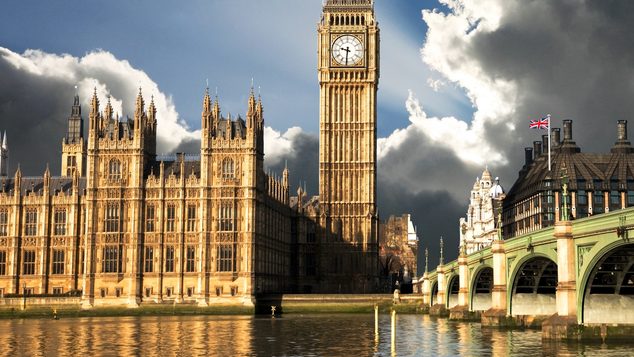Money’s too tight to mention
Over the first half of 2022, monetary-policy tightening went global. Year to date, 28 of the 36 countries that constitute the MSCI All Country World index increased their interest rates, representing combined hikes of +50.15 percentage points. This is before the widely anticipated increase in interest rates from the European Central Bank (ECB) in July. If the ECB delivers on its word, this will be the first increase for the European monetary union since 2011.
The US Federal Reserve (Fed) had been in the vanguard of the current monetary policy tightening cycle. The Fed pivoted in June 2021, albeit only in the form of rhetoric. It took until the March 2022 Federal Open Market Committee (FOMC) meeting for words to be backed up with actions. The Fed began with a customary 0.25% increase at the March FOMC meeting, but has since upped the ante: May saw the FOMC deliver a 0.50% hike, which was followed by a rise of 0.75% in June.
The new-found urgency has been informed by the continued acceleration of year-on-year consumer price inflation (CPI). The Fed and other central banks dropped the ‘transitory’ inflation line some time ago in favor of ‘persistent’. In the second quarter, they have been surprised by the continued acceleration of inflation. May saw US headline CPI print at 8.6%, the highest level since January 1982; the last time the Fed increased interest rates by 0.50% was in May 2000, while a 0.75% increase was last seen in November 1994. The central banking community has been clear that its immediate priority is combating inflation.
Sharing the stage at the ECB’s annual conference, ECB President Christine Lagarde, Fed Chair Jay Powell and Bank of England Governor Andrew Bailey called for rapid action to curb inflation. The risk, they said, was that failing to raise interest rates quickly enough could allow inflation to become embedded, which would ultimately require more drastic action to curb inflationary pressures. “The process is highly likely to involve some pain, but the worst pain would be from failing to address this high inflation and allowing it to become persistent”, said Powell.1
As we have noted previously, for the first time in at least a generation the objectives of the Fed’s dual mandate are in conflict with each other, and the focus on inflation has led many to question whether central banks are hiking economies into recession.
The reality is that the central banks are stuck between a rock and hard place. Given the political pressure to curb inflation, central banks have to do something. However, the central bank toolkit is furnished with blunt instruments. Unable to print oil, gas and agricultural commodities, central banks are left to curb demand by increasing interest rates in order to cool the credit-sensitive parts of the economy.
Castles built on sand?
While the Fed only began raising interest rates in March, the markets began pricing in rate increases from September of last year. The price of money has been moving higher for nine months, serving to tighten financial conditions, and nowhere is this more obvious than in the mortgage market. In the US, the 30-year fixed mortgage rate has doubled over this time period, while accompanying this meteoric rise in interest rates is a record volume of new home and apartment construction.

The record expansion of supply is a response to what was booming demand. On the secular side, millennials, the largest population cohort, enter their prime home-buying years just as working from home made possible a switch from cramped city apartments to spacious suburban houses. On the cyclical side, stimulus enhanced bank accounts while near-zero interest rates stoked bidding wars. Initially, restricted supply and surging demand played out in prices: from the end of 2019 through to March this year, the S&P CoreLogic Case-Shiller US National Home Price index increased by an incredible 39%.2
But with the fixed-rate, 30-year mortgage clipping 6% on June 21,3 the highest level since November 2008, the rubber is beginning to hit the road. Assuming a 20% down-payment on a median-priced home and a 30-year fixed-rate mortgage (up 2.7% since the start of this year), since New Year’s Eve monthly payments have soared by 56.3%. The market has already begun to deliver on the Fed’s desired demand destruction.
Predictably volumes are falling just as Covid-era bottlenecks are easing and supply is surging. Broadly defined residential real-estate activity generates between 15-18% of America’s GDP, according to the National Association of Home Builders. As the reality of higher mortgage rates meets record supply, the consequences are likely to weigh on economic growth.
While economic growth is likely to slow, we are unlikely to see a repeat of the 2007-09 housing bust. American households have collectively deleveraged since the financial crisis: debt as a percentage of disposable income stood at 134.3% at the end of the first quarter in 2008 versus 98.5% at the end of 2021. Over the same period, the stock of residential mortgage debt as a percentage of GDP declined from 73% to 49%.4 Furthermore, borrowers are protected against rising rates thanks to fixed-rate mortgages.
The same cannot be said of many other economies. Floating-rate mortgages predominate elsewhere – no more so than in Australia and Canada – exposing the fiscal fortunes of households far more to rising rates. These two countries largely escaped the worst of the financial crisis but have since gorged on debt, as the Reserve Bank of Australia and Bank of Canada participated in the zero-interest- rate and quantitative-easing party that followed. Households have binged on debt, taking household debt to 186.2% and 181.1% of income respectively.5 The toll is already playing out in these countries’ housing markets; in the former residential gold-rush town of Toronto, for example, home prices have fallen by 9.1% since February, while existing home sales plunged by 31.6% since May.
Watching paint dry–round 2
It is not just rising interest rates that the global economy and financial markets have to contend with. Doubling down on its efforts to put the inflation genie back in the bottle, the Fed has begun the process of reducing its balance sheet by not reinvesting a portion of maturing securities. The run-off will begin at an initial pace of US$30bn a month for Treasuries and US$17.5bn a month of mortgage-backed securities (MBS), ramping up over three months to a maximum pace of US$60bn and US$35bn respectively. Should the amount of maturing securities fall short of the monthly target, the shortfall will be made up by selling short-dated Treasury bills and potentially MBS.
When the Fed buys securities, it electronically credits the seller’s bank account with the funds while simultaneously crediting the bank’s account at the Fed with reserves. Through this process, the capital of the commercial banking system increases, thus easing financial conditions. By ceasing to reinvest the proceeds of its bond portfolio, the process reverses, leading to fewer reserves in the system and tighter financial conditions. By the third quarter of this year the Fed will be removing US$95bn of liquidity a month from the banking system.
Some have argued that the impact will be minimal, contending that there are other sources of funding, and banks remain well capitalized. Furthermore, the Fed’s balance sheet totaled US$9 trillion at its recent peak, more than double where it was before extraordinary monetary policy was relaunched in response to the Covid pandemic, so what’s US$95bn?
This is not the Fed’s first quantitative tightening rodeo. In 2017, ahead of the first attempt at balance-sheet reduction, Fed chair Janet Yellen predicted it would be akin to “watching paint dry”. Over the course of 2018 financial conditions gradually tightened, starting at the periphery of the world’s financial system and working its way to the core. The synchronized global growth of 2017, the first such period since the financial crisis, came to a halt as monetary inflation was replaced by monetary deflation. First, stress began to emerge in US-dollar funding markets, shortly after which the dollar stopped declining and turned higher. Soon after this, commodities peaked, while outside of the US credit spreads began widening. Safe-haven bond yields peaked both outside of and in the US, and equity market leadership became more defensive. Over the course of 2018 deflationary forces intensified as credit growth slowed, nominal growth slowed, and asset prices deflated. It was not until the fourth quarter, however, that deflationary forces offshore overwhelmed inflationary forces in the US, credit spreads widened and the US equity market declined, resolving the year-to-date divergence from global equities.
It may be different this time, but a logical exposition of the previous experience and the current financial architecture argues for a repeat performance. At the very least it would be unwise to assume this round of quantitative tightening will proceed without incident.
Worst start to the year on record
Monetary deflation has already weighed on financial markets; as ever, monetary tightening has affected asset prices before it has hit economic activity. It began in 2021, but as is typical of monetary economies, the reflexive, self-reinforcing relationship between liquidity conditions, asset prices and nominal income growth has gathered momentum. This has led to 2022 being one of the toughest first halves for markets on record.
The total return of US 10-year Treasury over the first six months of the year is the worst start since 1788, while the S&P 500 year-to-date total return is the worst since the first half of 1970.6 The simultaneous markdown of government bonds and equities has left few places to hide outside of cash, with the dollar continuing its march higher, the best real- time indicator of the liquidity tide rolling out. Commodities, increasingly seen as a place to hide in the face of the inflation outbreak, succumbed in the second quarter. The Commodity Research Bureau’s index of US raw industrial commodities declined by 10.18% as the market came to worry about central banks tightening into a recession.7
The mood hasn’t just soured in traditional financial markets. The crypto market has been a source of angst for those who have committed capital to the seemingly limitless supply of digital tokens. Bitcoin’s value has more than halved since the turn of the year and is off more than 70% from its November 2021 high.8 Other less illustrious coins have fared worse in 2022’s Bonfire of the Crypto Bros. Perhaps the most conspicuous fall from grace was the collapse in the so-called ‘stablecoin’ TerraUSD and the associated coin Luna, an event that evaporated US$45bn in digital wealth in one week. Every cloud has a silver lining and the deflating of the crypto bubble is at least leading to an upturn in activity in some parts of the analogue world. The Wall Street Journal reported a surge in crypto lawsuits, with plaintiffs’ claims ranging from pump-and-dump schemes to the sale of unregistered securities.
More than half a century ago, John Kenneth Galbraith presented a definitive depiction of the Wall Street Crash of 1929. He observed that embezzlement has the property that “weeks, months, or years elapse between the commission of the crime and its discovery. This is the period, incidentally, when the embezzler has his gain and the man who has been embezzled feels no loss. There is a net increase in psychic wealth.”9 Galbraith termed this transient increase in wealth as the ‘bezzle’.
Warren Buffett’s business partner, Charlie Munger, pointed out that the concept can be extended much more widely. This psychic wealth can be created without illegality: mistake or self-delusion is enough. Munger coined the term ‘febezzle’ or ‘functionally equivalent bezzle’ to describe the wealth that exists in the interval between the creation and the destruction of the illusion.
Many in the finance sector did not look kindly on those who pointed out that the ‘new economy’ bubble of the late 1990s had created a large febezzle. Investors displayed a preference for congratulating themselves on the profits they had earned from their vertiginously priced internet stocks. They did not realize that the money they had made would melt away when the monetary tide turned.
As the world turns

In their book The Fourth Turning, Neil Howe and William Strauss note that the error made by every generation is to assume that their children will grow up to be just like them. If ideals and priorities were so constant from one generation to the next, we would not see massive societal changes from one decade to the next. If we all grew up to be like our parents, the 1970s would not have been so different from the 1960s, the 1980s so different from the 1970s, and so on. Howe and Strauss argue that the state of society when a generation comes of age will have profound implications for how they govern.
The coming decade is likely to be a key turning point in Western democracies. Electorates in the West are currently transitioning through the most profound generational change since the early 1980s, when Baby Boomers (people born in the years following the Second World War) became the largest voting bloc, displacing the Greatest Generation (born between 1910-1924). In the 2020 US election, Millennials and Generation Z (people born between the early 1980s and early 2010s) approximately equaled Baby Boomers and prior generations as a share of all Americans eligible to vote.
At the 2020 US election older voters turned out at higher rates than younger cohorts and so cast more ballots. However, in 2024 the two younger generations are expected to equal the older ones as a share of actual voters on election day. By 2028, Millennials and Generation Z will dwarf the older generations as a share of both eligible and actual voters, and a similar pattern in playing out across other Western democracies.
As Millennials and Generation Z come to dominate Western electorates, politicians will inevitably begin to govern in their interests. Intergenerational inequality is likely to increasingly shape politics. The Baby Boomer generation has benefited handsomely from 40 years of asset inflation, but with asset inflation outstripping income growth on a structural basis, a middle-class life has become beyond the reach of many from the Millennial and Generation Z cohorts. The issue was exacerbated by the 2008 global financial crisis, after which wages for those entering the workforce were depressed and have subsequently failed to recover to previous levels, which made saving that much harder. The result is significant intergenerational wealth inequality, as demonstrated by economist Gray Kimbrough in 2019.10
Intergenerational tensions are likely to be stoked further as populations age. The Baby Boomers and older generations were the beneficiaries of a steady decline in dependency ratios from the early 1960s through to the mid-2000s. This made a steady expansion of government expenditures, including the welfare state, less financially burdensome for taxpayers. Now, as populations age and the Boomers head off into retirement, dependency ratios are set to rise on a structural basis, leaving a proportionally smaller group of Millennial and Generation Z workers to foot the bill. Viewed from this perspective, it is not difficult to see why the preferences of Millennials and Generation Z will differ from those of their parents. Working ever harder so the government can provide generous welfare payments to a cohort that holds the majority of wealth hardly smacks of fairness.
The consensus within financial markets is that aging populations are deflationary. But a reading of history reveals that increasing dependency ratios have coincided with periods of elevated inflation. In a 2018 paper, researchers at the Bank for International Settlements demonstrated this link empirically, concluding that “inflationary pressure rises when the share of dependents increases and, conversely, subsides when the share of working age population increases. This relationship accounts for the bulk of trend inflation, for instance, about 7 percentage points of US disinflation since the 1980s.” The authors go on to state that inflation is set to rise over the coming decades.11
The authors do not opine on why inflation tends to rise when dependency ratios rise. However, a reading of financial history shows that rising dependency ratios tend to coincide with a greater role for government, ergo increased fiscal deficits. As ever, seigniorage, the age-old method of clipping the coin, is used to finance a significant portion of government expenditures. Why, after all, should the working population forgo an ever-larger share of their earnings in taxes to pay for the retired, particularly when they are asset-rich?
We have covered in previous editions how policy is changing. The key point is a that societies are calling for a greater role for government in economic management. Fiscal policy is increasingly active and working alongside monetary policy to deliver the wants of the electorate. This is likely to continue and is the essence of our big government theme. Many from the older generations balk at the more active role being played by governments in economic management, embodying former US President Ronald Reagan’s assertion that the nine scariest words in the English language are “I’m from the government and I’m here to help”. But as with many of the changes taking place in the world today, it is a function of the continuing changing of the generational guard.
1 Source: Federal Reserve officials warn entrenched inflation poses ‘significant risk’, Financial Times. July 6, 2022.
2 Source: Bloomberg, July 2022.
3 Source: Bloomberg, July 2022.
4 Source: Federal Reserve data, Bloomberg, July 2022.
5 Source: Bank of international Settlements, July 2022.
6 Source: Deutsche Bank, July 2022.
7Source: Bloomberg, July 2022.
8 Source: Bloomberg, July 2022.
9 Source: The Great Crash 1929, John Kenneth Galbraith.
10 Source: The staggering millennial wealth deficit, in one chart, Washington Post, December 3, 2019. https://www.washingtonpost.com/business/2019/12/03/precariousness- modern-young-adulthood-one-chart/
11 Source: The enduring link between demography and inflation, Mikael Juselius and Előd Takáts, Bank for International Settlements, May 2018 https://www.bis.org/publ/work722.pdf
Important information
This is a financial promotion and has been issued by Newton Investment Management North America LLC (NIMNA). NIMNA is a registered investment adviser and subsidiary of The Bank of New York Mellon Corporation (“BNY Mellon”). NIMNA was established in 2021, comprised of equity and multi-asset teams from an affiliate, Mellon Investments Corporation. NIMNA is part of the group of affiliated companies that individually or collectively provide investment advisory services under the brand “Newton” or “Newton Investment Management” (“Newton”). Newton currently includes NIMNA and Newton Investment Management Ltd. (“Newton Limited”).
In the United Kingdom, NIM is authorised and regulated by the Financial Conduct Authority (‘FCA’), 12 Endeavour Square, London, E20 1JN, in the conduct of investment business. Registered in England no. 01371973. NIM and NIMNA are both registered as investment advisors with the Securities & Exchange Commission (‘SEC’) to offer investment advisory services in the United States. Newton’s investment business in the United States is described in Form ADV, Part 1 and 2, which can be obtained from the SEC.gov website or obtained upon request. Both firms are indirect subsidiaries of The Bank of New York Mellon Corporation (‘BNY Mellon’).
Material in this publication is for general information only. The opinions expressed in this document are those of Newton and should not be construed as investment advice or recommendations for any purchase or sale of any specific security or commodity. Certain information contained herein is based on outside sources believed to be reliable, but its accuracy is not guaranteed. Statements are correct as of the date of the material only. You should consult your advisor to determine whether any particular investment strategy is appropriate.
No investment strategy or risk management technique can guarantee returns or eliminate risk in any market environment and past performance is no indication of future performance. The indices referred to herein are used for comparative and informational purposes only and have been selected because they are generally considered to be representative of certain markets. Comparisons to indices as benchmarks have limitations because indices have volatility and other material characteristics that may differ from the portfolio, investment or hedge to which they are compared. The providers of the indices referred to herein are not affiliated with NIMNA, do not endorse, sponsor, sell or promote the investment strategies or products mentioned herein and they make no representation regarding the advisability of investing in the products and strategies described herein. Any forward-looking statements speak only as of the date they are made, and are subject to numerous assumptions, risks, and uncertainties, which change over time. Actual results could differ materially from those anticipated in forward-looking statements.
This material is for institutional investors only. This publication or any portion thereof may not be copied or distributed without prior written approval from the firm.
Personnel of certain of our BNY Mellon affiliates may act as: (i) registered representatives of BNY Mellon Securities Corporation (in its capacity as a registered broker-dealer) to offer securities, (ii) officers of the Bank of New York Mellon (a New York chartered bank) to offer bank-maintained collective investment funds, and (iii) Associated Persons of BNY Mellon Securities Corporation (in its capacity as a registered investment adviser) to offer separately managed accounts managed by BNY Mellon Investment Management firms, including NIMNA and (iv) representatives of Newton Americas, a Division of BNY Mellon Securities Corporation, U.S. Distributor of Newton Investment Management North America.
In Canada, NIMNA is availing itself of the International Adviser Exemption (IAE) in the following Canadian Provinces: Alberta, British Columbia, Manitoba and Ontario and is availing itself of an exemption under sections 38 or 80 of the Commodity Futures Act (Ontario). The IAE is in compliance with National Instrument 31-103, Registration Requirements, Exemptions and Ongoing Registrant Obligations.




